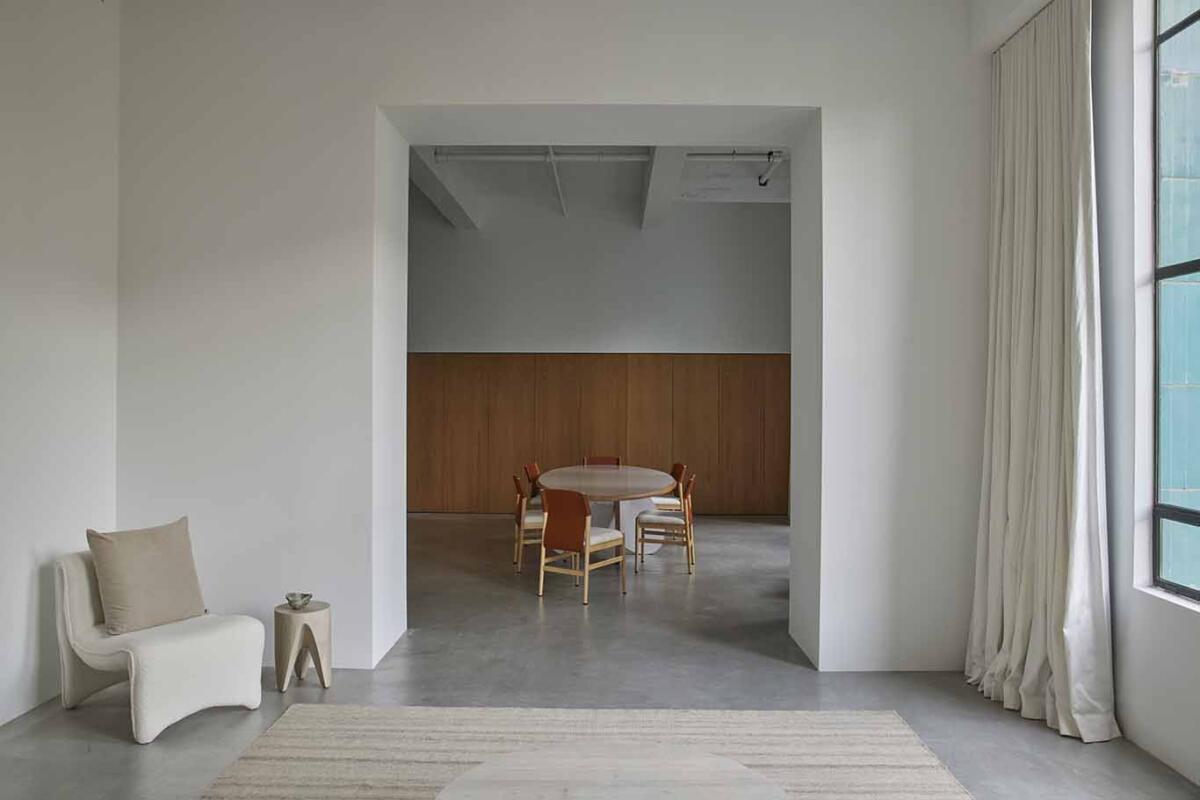Transforming Family Life through Minimalism: Tips for an Organized and Cozy Home

Embracing Minimalism for a Serene Home
In today’s fast-paced world, families often find themselves overwhelmed by clutter and chaos. The constant influx of possessions, responsibilities, and distractions can create an environment filled with stress and confusion. Minimalism emerges as a refreshing antidote, offering a pathway to an organized and cozy home environment that fosters tranquility and well-being.
Adopting a minimalist lifestyle can transform family life, bringing a myriad of benefits that enhance daily existence. One of the foremost advantages is the reduced stress associated with cluttered spaces. Studies have shown that clutter can lead to increased anxiety and difficulty concentrating. By clearing away excess items, families can create a peaceful sanctuary that promotes relaxation and mental clarity.
Another key benefit is the enhancement of focus on what truly matters. Minimalism encourages families to prioritize experiences over things. This shift can mean more quality time spent together, such as game nights, outdoor adventures, or simply relaxing without the distraction of unneeded stuff. For example, families can replace impulse shopping trips with planned experiences, like visiting a local museum or going for nature hikes, building deeper connections in the process.
Moreover, a minimalist lifestyle can lead to a more harmonious family dynamic. With fewer items to manage and a simpler home environment, families can spend less time cleaning and organizing and more time enjoying each other’s company. Picture a weekend spent together, playing board games in the living room, surrounded by a tidy space that feels inviting rather than overwhelming.
Transforming your home into a minimalist sanctuary can initially feel daunting, but it can be achieved through a series of straightforward steps. Start by assessing each room for essential items. Determine what is truly necessary and let go of duplicates or items that no longer serve a purpose. A periodic approach to decluttering—designating time bi-weekly to tackle specific areas—can also prove helpful. By doing so, families can maintain a sense of order without feeling consumed by the task.
Creating designated spaces for belongings is another vital component of minimalism. For instance, using baskets or clear bins for toys can help children learn organization skills while making it easier for everyone to maintain the order over time. It’s important to remember that this journey may not yield instant results, but the rewards—such as a calm home and stronger family bonds—are truly invaluable.
So, are you ready to explore how minimalism can reshape your family life? Embrace the journey and discover the peace that comes from living with less.
DISCOVER MORE: Click here to find out how simple living can boost your productivity
Creating a Decluttering Strategy
Embarking on a minimalist journey starts with a clear and actionable decluttering strategy. In a world filled with consumerist culture and excessive marketing, it is essential to reclaim control over your living space. To begin, families should consider implementing a few key principles that guide the decluttering process and ensure a successful transition towards minimalism.
First and foremost, adopt the One-Year Rule. This principle encourages individuals to examine items based on their usage within the past year. If an item hasn’t been used or worn in this timeframe, it’s likely time to part ways. This not only applies to clothing but also extends to gadgets, decor, and kitchenware. By taking an honest inventory, families can significantly reduce the number of items that clutter their living spaces.
Another effective strategy is the Four-Box Method. Designate four labeled boxes for items as follows:
- Keep: Items you use regularly and love.
- Donate: Items that are in good condition but are no longer needed.
- Recycle: Broken or damaged items that cannot be repaired.
- Trash: Items that are no longer functional and simply take up space.
This method provides a structured way to approach decluttering, allowing families to evaluate each item effectively. It also helps with ensuring that everyone in the family is part of the process, thus fostering a sense of responsibility and teamwork.
Once you’ve decluttered, the next step involves organizing what remains. This process focuses not just on arranging items aesthetically, but on creating functional spaces that serve your family’s needs. For example, consider using multifunctional furniture, such as storage ottomans or coffee tables with built-in shelves, to minimize clutter while maximizing space. Additionally, introducing wall-mounted racks can cleverly utilize vertical space, freeing up the floors and making the area feel more open.
Involving children in the organization process can also be beneficial. Teaching kids to sort their toys, books, and clothes fosters a sense of ownership and responsibility. You can create a fun game around maintaining an organized space, where kids earn points or rewards for keeping their areas tidy. This interactive approach not only simplifies the task at hand but also turns it into a valuable life lesson.
As you explore the journey of minimalism, it’s crucial to remember the impact that every small change makes. By implementing these strategies, families can gradually transform their homes into serene sanctuaries that prioritize comfort, utility, and togetherness.
| Category | Key Features |
|---|---|
| Decluttering | Facilitates a more livable space by removing excess items that contribute to stress. |
| Mindful Living | Encourages thoughtful purchases that enhance well-being and reduce future clutter. |
| Family Time | Creates more opportunities for quality interactions by removing distractions and chaos. |
| Simplicity | Promotes a serene environment that fosters relaxation and mental clarity. |
Embracing minimalism can revolutionize family life, fostering an atmosphere that is not just organized but also cozy. As families tackle the challenge of decluttering, they often discover that letting go of unnecessary possessions simplifies daily routines and reduces stress. The process of decluttering is not just about removing items; it’s a transformative journey that paves the way for more mindful living.Prioritizing thoughtful purchases can lead families to focus on what truly matters to them. This paradigm shift towards mindful living helps avoid redundancy and reduces future clutter significantly. By embracing the essentials, family members can engage more deeply with their surroundings.Moreover, creating a simplified space opens up precious time for family bonding. With less physical and mental clutter, families can enjoy uninterrupted interactions, leading to stronger relationships. The ambiance of a cozy home nourishes this interaction, paving the way for lasting memories. Transitioning to minimalism is a gradual process, and the rewards extend beyond just aesthetics; it’s a holistic approach that invigorates a family’s lifestyle.
DISCOVER MORE: Click here for practical decluttering tips
Establishing Mindful Consumption Habits
Minimalism isn’t just about decluttering your home; it’s also about adopting a mindset of mindful consumption. To truly transform your family life, it’s essential to rethink your purchase habits and focus on quality over quantity. By establishing a few guidelines, families can cultivate an environment that emphasizes intentional living and reduces the influx of unnecessary items.
Start by creating a shopping list before you head to the store. This not only helps minimize impulse purchases but also reinforces a focus on what’s necessary for your family. Encourage family members to discuss and evaluate purchases together. By involving everyone in the decision-making process, children learn valuable lessons about financial responsibility and the importance of prioritizing needs over wants.
Another effective approach is the 30-Day Rule. If a family member feels compelled to buy something that isn’t an immediate necessity, have them wait for 30 days. Often, this waiting period reveals whether the desire was a fleeting impulse or a genuine need. After a month, when the item is still on their mind, a thoughtful discussion about its value versus its place in the home can further cement responsible purchasing habits.
Creating Functional and Cozy Spaces
Once you’ve decluttered and established a mindful consumption strategy, the next step is to craft spaces that are both functional and inviting. This is where the true charm of minimalism shines. Start with each area of the home, identifying its primary function and making necessary adjustments.
For instance, the living area should be a space for family connection and relaxation. Use textured fabrics like soft throw blankets and cushions to add warmth and coziness to the minimalist aesthetic. Consider adding plants to breathe life into the space; indoor plants not only improve air quality but also enhance emotional well-being.
In the kitchen, consider implementing a “one in, one out” policy for kitchen gadgets. This means every time a new gadget is purchased or introduced, an old one must be removed. Such a practice prevents overcrowding and ensures that your kitchen remains a hub for creativity rather than a cluttered space that feels intimidating to cook in.
Incorporating Minimalism into Family Activities
Minimalism extends beyond tangible items; it can enhance the quality of family life through shared activities and experiences. Embrace quality family time by planning activities that require minimal preparation but yield maximum engagement. Nature hikes, board game nights, or backyard picnics all emphasize connection over consumption.
By integrating minimalism into family traditions, you cultivate an appreciation for experiences rather than material possessions. For example, try hosting a “family game night” where only a few favorite games are played, eliminating the need to acquire new games frequently. This not only reinforces bonds but also demonstrates the beauty of simplicity.
Ultimately, embracing minimalism in family life is about creating spaces and habits that foster connection, personal growth, and well-being. As families implement these tips, they pave the way for a harmonious home where love, joy, and meaningful interactions prevail—proving that less truly can be more.
DIVE DEEPER: Click here to simplify your wardrobe
Conclusion: Embracing Minimalism for a Fulfilling Family Life
In a world overflowing with distractions and material possessions, embracing minimalism offers families an invaluable opportunity to reclaim their time, space, and relationships. As we’ve explored, transforming family life through minimalism isn’t merely about clearing out clutter; it can redefine how families interact, prioritize, and thrive together.
By adopting mindful consumption habits, families can reduce unnecessary purchases and instead invest in quality items that enhance their lives. This intentional approach fosters discussions around financial literacy and empowers children to understand the value of what they own. Furthermore, creating functional and cozy spaces ensures that each area of the home serves a greater purpose, encouraging family interaction and relaxation.
Integrating minimalism into family activities further strengthens connections, reminding everyone that shared experiences and time together are far more fulfilling than material possessions. Planning low-preparation activities cultivates greater appreciation and joy within family life, nurturing lasting memories that go beyond the fleeting excitement of new acquisitions.
Ultimately, embracing minimalism means prioritizing what truly matters. By simplifying our homes and lives, we open the doors to deeper connections, increased well-being, and a unique sense of peace. As families embark on this transformative journey, they not only create a well-organized home but also pave the way for a warm, inviting atmosphere filled with love and joy. Explore the minimalist lifestyle further, and uncover the profound impact it can have on creating a more engaging and fulfilling family life.


